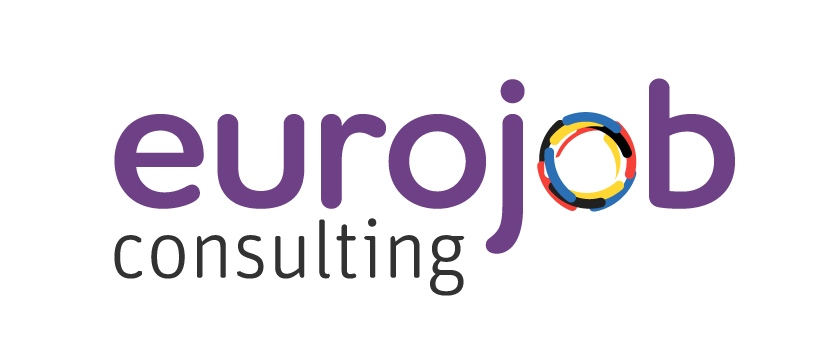Hiring in France: Best Practices for Working with a Recruitment Firm

Expanding into France’s competitive job market requires more than just posting job ads. Complex labor laws, cultural differences, and high demand for top talent make hiring a challenge for international companies. Partnering with a head-hunter can streamline recruitment, but success depends on choosing the right firm and structuring the collaboration effectively. This guide outlines key steps to selecting and working with a head-hunter in France, ensuring faster, more efficient, and risk-free hiring.
2. Choose the Right Recruitment Model
3. Maintain Transparent and Regular Communication
4. Evaluate Candidates and Make Informed Decisions
5. Ensure Post-Hire Follow-Up and Integration

Before engaging a head-hunter in France, it is essential to clearly define your hiring needs to ensure a focused and efficient recruitment process.
"A well-prepared job description helps the recruiter target the right candidates, reducing the time-to-hire and minimizing the risk of misalignment between expectations and reality. "
Adélaïde Sapelier
Recruiter
Eurojob-Consulting

1. Key Elements of a Well-Defined Hiring Need
A detailed hiring brief should include:
- Job Title and Responsibilities: Clearly define the role and expected deliverables. For example, a "Business Development Manager" in France may require expertise in B2B sales and knowledge of local business regulations.
- Technical and Professional Qualifications: Specify the must-have skills (e.g., fluency in French, experience in a specific industry, software proficiency).
- Soft Skills and Cultural Fit: Consider essential interpersonal skills, such as adaptability, negotiation skills, and cross-cultural communication—especially important for international teams operating in France.
- Salary and Benefits: Define the salary range, commission structure, and additional perks (e.g., company car, remote work options, bonus schemes). According to INSEE, the average salary for senior managers in France varies significantly depending on the industry and region.
- Location and Work Model: Indicate whether the role is on-site, remote, or hybrid, as flexible working conditions are becoming increasingly important for candidates.
By providing a structured job specification, companies help head-hunters refine their search and focus on high-quality candidates rather than a broad but less relevant pool.
2. Understanding the French Market Dynamics
The French job market has specific legal and cultural characteristics that can impact hiring decisions. Understanding these factors is crucial:
- Longer notice periods: In France, notice periods can extend up to three to six months for senior positions. A well-defined hiring need allows the head-hunter to anticipate these delays.
- Collective agreements (Conventions Collectives): These agreements govern salary structures, working hours, and benefits in various industries, so salary expectations must align with French labor standards.
- Work-life balance expectations: The French work culture values work-life balance, with a 35-hour workweek being the standard in many industries. Candidates may prioritize flexible work conditions over a higher salary.
By clarifying key job requirements and aligning them with market expectations, businesses improve their chances of attracting top-tier talent in France.
3. Aligning Internal Stakeholders
For international companies, internal alignment is just as important as external recruitment efforts. Before involving a head-hunter, businesses should ensure:
- HR and hiring managers agree on the job scope, priorities, and candidate profile.
- Budget and compensation packages are pre-approved, avoiding delays during the negotiation phase.
- A realistic hiring timeline is established, considering market conditions and industry demand.
A lack of internal alignment can result in delays, candidate drop-offs, and increased hiring costs. Ensuring that all decision-makers are aligned before starting the recruitment process enhances efficiency and hiring success.
4. How a Head-Hunter Adds Value
Once hiring needs are clearly defined, a specialized head-hunter can:
- Refine job descriptions based on market insights and competitor benchmarks.
- Advise on salary and benefit expectations, ensuring offers are competitive.
- Identify and approach passive candidates, who are not actively looking but might be the perfect fit.
Selecting the right recruitment model is crucial when working with a head-hunter in France. Different firms operate under various pricing and engagement structures, and choosing the most suitable approach ensures cost efficiency, faster hiring, and better candidate quality. Understanding these models helps businesses optimize their recruitment strategy and avoid unnecessary expenses or delays.
1. Understanding the Main Recruitment Models
Recruitment agencies in France generally offer three main engagement models:
- Success Fee (Contingency Recruitment): The company pays only after a successful hire.
- Retainer Model (Executive Search): A fixed fee is paid in multiple stages, typically for senior or niche roles.
- Recruitment Process Outsourcing (RPO): The head-hunter takes full responsibility for ongoing recruitment needs.
Each model has its advantages and is suited to different hiring needs.
2. Success Fee (Contingency Recruitment)
In this model, companies only pay once a candidate is successfully placed. This is the most common structure for mid-level and operational roles, such as sales representatives, project managers, or marketing specialists.
Advantages
- No upfront costs, reducing financial risk.
- Motivates the recruiter to act quickly and present multiple candidates.
- Ideal for non-exclusive roles where multiple agencies may be involved.
Disadvantages
- Agencies may prioritize speed over quality, leading to less thorough vetting.
- Less suitable for highly specialized or leadership positions, where deeper candidate assessment is required.
Best for: Companies looking to fill mid-level roles efficiently without committing to upfront payments.
3. Retainer Model (Executive Search)
The retainer model is preferred for senior executives, C-level positions, or hard-to-fill technical roles. The company makes an initial payment, followed by additional payments at various stages of the recruitment process.
Advantages
- More personalized and in-depth candidate search.
- Ideal for confidential searches where discretion is needed.
- Ensures a long-term commitment from the head-hunter, leading to better candidate quality.
Disadvantages
- Higher upfront investment before results are delivered.
- May not be necessary for general or mid-level roles.
Best for: Companies hiring executives, specialists, or leadership roles requiring highly targeted talent acquisition.
4. Recruitment Process Outsourcing (RPO)
In RPO, a company outsources its entire recruitment process to an external provider. This model is often used by large multinational corporations or companies expanding rapidly.
Advantages
- Full recruitment process management, reducing internal HR workload.
- Strong focus on long-term hiring strategies rather than individual placements.
- Cost-effective for companies with high-volume hiring needs.
Disadvantages
- Less flexibility for one-off or short-term hiring needs.
- Requires deep integration between the RPO provider and the company’s HR team.
Best for: Companies with ongoing recruitment needs or those setting up a new branch in France and requiring multiple hires.
5. Key Considerations When Choosing a Recruitment Model
When selecting the right approach, companies should consider:
- Urgency of the hire: If time is critical, a success-fee model may be more appropriate.
- Complexity of the role: Highly specialized or executive positions require a retainer model for in-depth search.
- Budget constraints: Success-fee models minimize upfront costs, while RPO provides cost efficiency for high-volume recruitment.
- Level of involvement required: Companies needing strategic hiring support may benefit from RPO, while those seeking a single role may prefer contingency or retained search.
Effective collaboration with a head-hunter in France relies on clear, structured, and ongoing communication. A lack of transparency can lead to misaligned expectations, delays, and suboptimal hiring outcomes.
" To ensure a smooth recruitment process, businesses must establish regular interactions, provide timely feedback, and keep recruiters informed of any changes."
Adélaïde Sapelier
Recruiter
Eurojob-Consulting

1. Establish Clear Communication Channels
From the outset, companies should define how they will communicate with the recruitment firm. This includes:
- Designating a point of contact within the company (HR manager, hiring manager, or department head).
- Setting up regular check-ins (weekly or biweekly meetings) to discuss candidate progress and market insights.
- Agreeing on a preferred communication method (email, video calls, or in-person meetings).
For international companies hiring in France, aligning with a recruiter who understands both local and global hiring expectations is crucial. Agencies specialize in international recruitment and can bridge cultural and logistical gaps.
2. Provide Prompt and Constructive Feedback
One of the most common reasons for hiring delays is slow or vague feedback from the employer. To keep the process efficient:
- Evaluate candidates quickly after interviews and share structured feedback.
- Clearly communicate why a candidate was or wasn’t a good fit, so the head-hunter can refine the search.
- Set response deadlines to maintain momentum—ideally, within 48 to 72 hours after receiving a candidate profile.
Recruitment firms emphasize that quick decision-making increases the likelihood of securing top candidates, as high-demand professionals often receive multiple offers.
3. Keep the Recruiter Informed of Any Changes
Hiring priorities may shift due to budget changes, internal restructuring, or shifting business strategies. Companies should:
- Update the head-hunter immediately if job requirements, salary budgets, or hiring timelines change.
- Be transparent about competing candidates if multiple recruitment firms are involved.
- Share internal challenges (e.g., a hiring freeze or revised job scope) to avoid unnecessary candidate searches.
A well-informed recruiter can adapt quickly and avoid presenting irrelevant candidates, saving time and resources.
4. Align on Candidate Expectations and the Selection Process
Misalignment on evaluation criteria and hiring processes can create confusion and delay decision-making. To prevent this:
- Clearly define interview stages (e.g., number of rounds, assessments, panel interviews).
- Discuss negotiation flexibility regarding salary, benefits, and contract terms.
- Ensure that internal stakeholders agree on selection priorities before engaging a head-hunter.
For example, if a company is hiring a Regional Sales Director in France, it must decide upfront if they prioritize:
- A candidate with strong industry connections over one with broader leadership experience.
- A French-speaking professional over a multilingual candidate.
- Someone with a high salary expectation but a strong track record versus a more affordable but less experienced hire.
Defining these factors in advance prevents last-minute hesitations and accelerates the hiring process.
5. Avoid Common Communication Pitfalls
To ensure a productive relationship with a head-hunter, companies should avoid:
- Delays in candidate feedback, which can lead to missed hiring opportunities.
- Vague or shifting job descriptions, causing confusion in candidate selection.
- Lack of engagement from decision-makers, resulting in slowed recruitment timelines.
A well-structured and transparent communication strategy ensures that both the employer and the recruiter are aligned, leading to faster and more effective hiring.
Selecting the right candidate is a critical step in the hiring process. While a head-hunter provides pre-screened talent, companies must ensure they thoroughly assess candidates to make the best decision. A structured evaluation process, clear selection criteria, and data-driven decision-making help minimize hiring risks and improve long-term employee retention.
1. Define Key Evaluation Criteria
Before reviewing candidates, businesses should establish clear evaluation criteria based on the job’s specific requirements. These should include:
- Technical skills and industry knowledge: Does the candidate possess the required qualifications, certifications, or expertise?
- Soft skills and leadership qualities: Can they adapt to the company’s culture, work independently, and lead teams if necessary?
- Cultural fit: Do they align with the company’s values, work style, and communication preferences?
- Language proficiency: For roles in France, is fluency in French required, or is English sufficient?
2. Conduct a Structured Interview Process
A well-organized interview process helps compare candidates effectively. Recommended best practices include:
- Behavioral interviews: Assess how a candidate handled past challenges and decision-making scenarios.
- Technical assessments: Evaluate problem-solving skills, especially for IT, engineering, and finance roles.
- Panel interviews: Involve key decision-makers early to ensure alignment on hiring decisions.
- Case studies or role-play exercises: Useful for sales, management, and consulting positions.
For example, a company hiring a Senior Sales Director for the French market may ask candidates to:
- Present a market entry strategy for France based on real case studies.
- Demonstrate negotiation skills through a role-play sales scenario.
- Explain how they manage long-term client relationships in a French business environment.
3. Use Data-Driven Decision-Making
Relying solely on gut feelings can lead to biased hiring decisions. Instead, businesses should adopt a data-driven approach by:
- Scoring candidates based on predefined evaluation metrics.
- Comparing interview performance across structured criteria.
- Reviewing reference checks to validate past achievements.
4. Align Decision-Makers Early
A common hiring challenge is delayed decision-making due to misalignment among internal stakeholders. To prevent this:
- Ensure all decision-makers are aligned on hiring priorities before interviews begin.
- Schedule debrief meetings immediately after interviews to compare feedback.
- Establish a clear decision timeline to avoid losing top candidates to competitors.
Fact: According to LinkedIn Talent Solutions, companies that take longer than two weeks to make an offer risk losing top candidates, as they are likely considering multiple job opportunities.
5. Be Prepared for Negotiation and Closing
Once a candidate is selected, the offer negotiation process should be swift and transparent. Companies should:
- Align with the head-hunter on salary benchmarks to ensure a competitive offer.
- Be clear on benefits, bonuses, and career progression opportunities.
- Move quickly to avoid counter-offers from competitors.

Recruiting the right candidate is only the first step. A successful hire depends on proper onboarding, follow-up, and long-term integration. Without a structured post-hire process, companies risk early turnover, misalignment of expectations, and reduced productivity. Partnering with a head-hunter who provides post-placement support can significantly improve employee retention and overall success.
1. Establish a Structured Onboarding Plan
A well-designed onboarding program ensures that new hires adapt quickly and perform efficiently. Essential onboarding steps include:
- Providing a detailed orientation program: Cover company values, culture, and key processes.
- Assigning a mentor or coach: A senior team member can guide the new hire through the first few months.
- Setting clear performance expectations: Define short-term and long-term goals with measurable KPIs.
- Facilitating integration into the team: Organize introductions, team meetings, and informal networking opportunities.
2. Maintain Regular Follow-Ups
Frequent check-ins during the first six months help ensure the new employee is settling in well. Recommended follow-up checkpoints:
- Week 1: Confirm a smooth start and address any immediate concerns.
- Month 1: Evaluate initial performance and satisfaction with the role.
- Month 3: Discuss any challenges and adjust expectations if needed.
- Month 6: Conduct a formal performance review to ensure long-term alignment.
3. Address Potential Challenges Early
Even the best hires may experience difficulties during the transition. Companies should:
- Encourage open communication: New employees should feel comfortable discussing concerns.
- Provide additional training if needed: Offer skills development programs to enhance job performance.
- Monitor team dynamics: Ensure smooth collaboration and avoid integration issues.
If a company identifies early warning signs such as disengagement, lack of motivation, or performance gaps, early intervention can prevent turnover.
4. Leverage the Headhunter’s Expertise for Retention Strategies
Many head-hunters offer post-hire advisory services to help companies improve retention. These include:
- Market benchmarking: Ensuring that compensation and benefits remain competitive.
- Career development planning: Helping new employees see long-term growth opportunities within the company.
- Exit risk analysis: Identifying potential retention risks and addressing them proactively.
For executive-level hires, ongoing coaching and leadership training can further strengthen integration and performance.
5. Utilize Replacement Guarantees When Necessary
If a new hire does not meet expectations, some head-hunters offer a replacement guarantee, meaning they will find a new candidate at no additional cost.
A successful partnership with a head-hunter in France relies on clearly defined expectations, structured communication, and post-hire follow-up. By selecting the right recruitment model and maintaining transparency throughout the process, companies can optimize their hiring strategy, attract top talent, and minimize hiring risks.
For more great tips :
- Managing Difficult Employees in France: Strategies for Success
- How Social Benefits Drive Recruitment and Retention in France
- Hiring on a budget in France: Effective ways to reduce recruitment expenses





